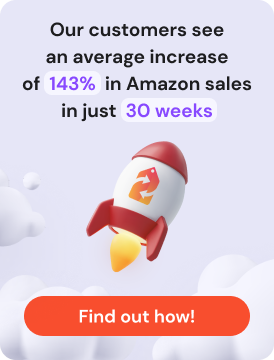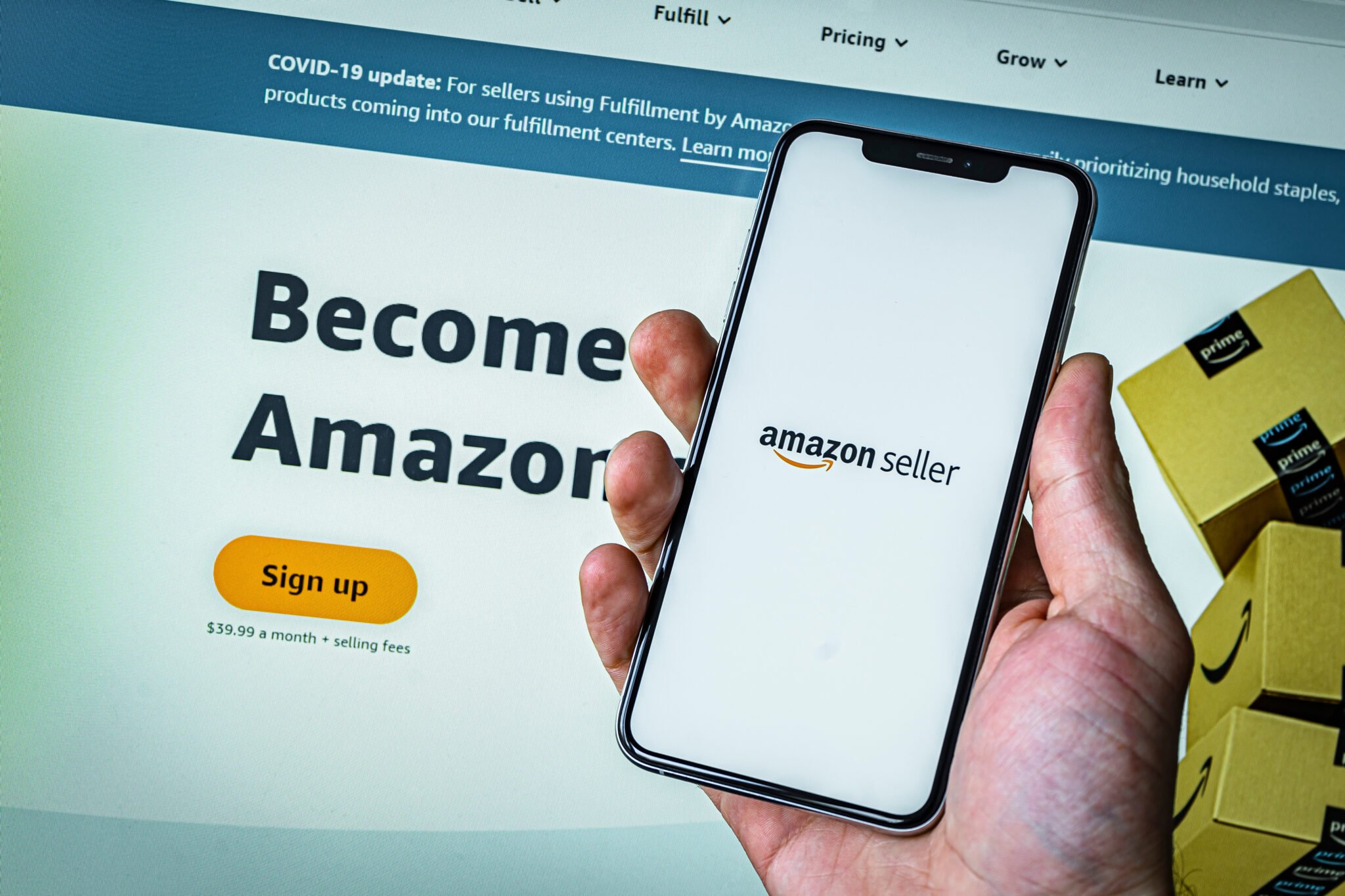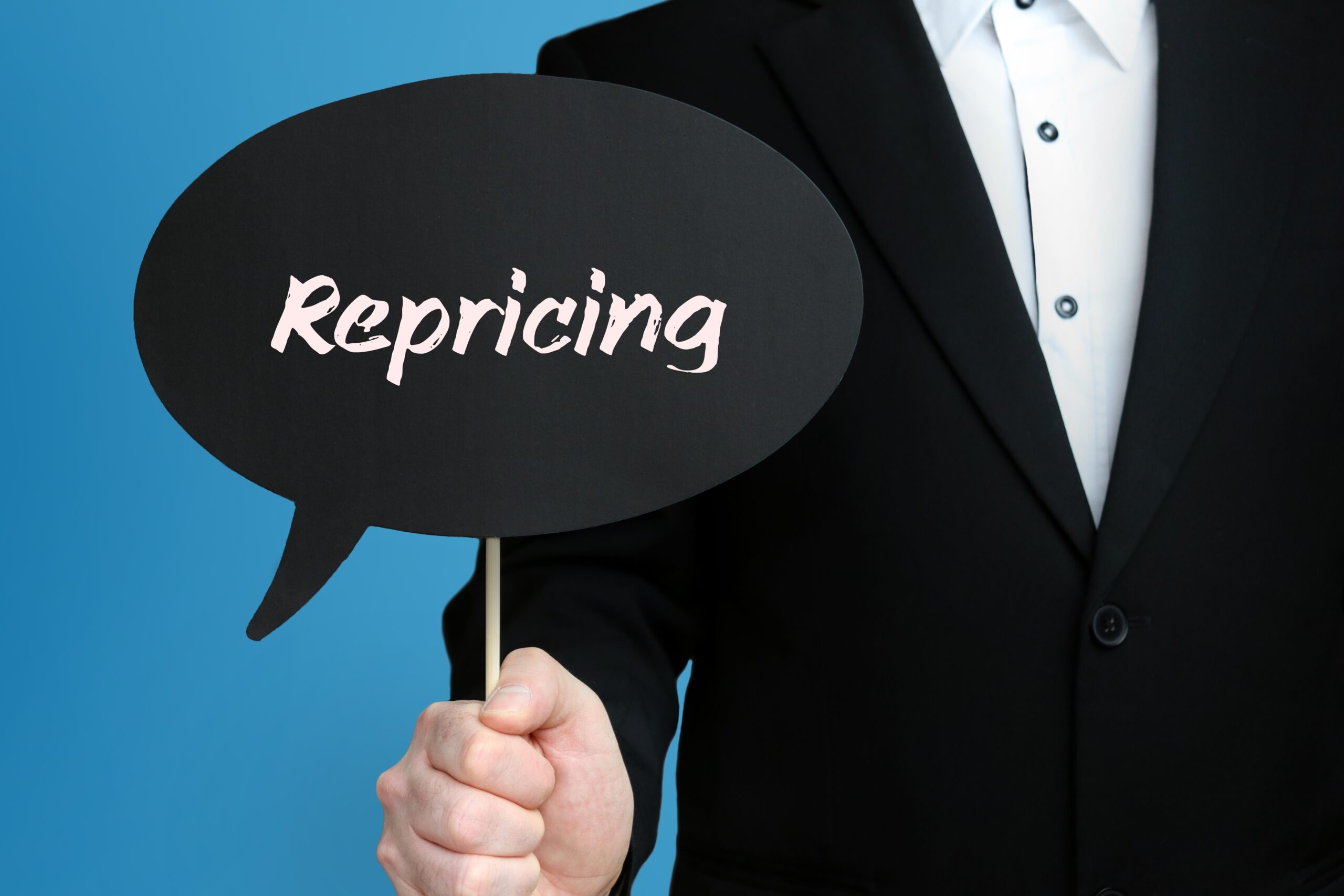Bottom Line Up Front: Automated repricing saves Amazon, eBay, and Walmart sellers 15+ hours per week while simultaneously increasing Buy Box wins, conversion rates, and profit margins by 20-30%. This guide shows you exactly how automation works, which tools deliver real results, and how to implement smart repricing strategies that reclaim your time while scaling profitably.
Time is money in ecommerce, but manual repricing steals both. While you’re spending hours checking competitor prices and adjusting listings, you’re losing Buy Box opportunities and watching profit margins slip through your fingers. The solution? Automated repricing technology that handles price optimization 24/7 while you focus on growing your business.
What Is Automated Repricing?
Automated repricing is intelligent software that monitors competitor prices, marketplace dynamics, and Buy Box triggers in real-time, then automatically adjusts your product prices based on pre-set rules or AI algorithms. Instead of manually checking prices multiple times daily, repricing software handles the heavy lifting while you focus on strategic decisions. Understanding what repricing is and why it matters provides crucial context for why automation has become non-negotiable.
In 2025, automated repricing has become essential infrastructure for serious sellers. The technology has evolved beyond simple rule-based systems to incorporate machine learning, inventory awareness, and sophisticated competitor analysis that responds to market changes in seconds rather than hours. Small Business Trends reports that ecommerce automation tools like repricing software are among the top investments for scaling online businesses efficiently.
Who benefits most from automated repricing?
- Solo sellers and solopreneurs drowning in daily price checks across hundreds of SKUs
- FBA brands competing for Buy Box dominance in crowded categories
- High-volume resellers managing thousands of products across multiple marketplaces
- Multi-channel merchants selling on Amazon, eBay, and Walmart simultaneously
The Manual Repricing Problem: Where Time and Profits Disappear
Before automation, sellers faced a brutal daily grind. Let’s break down where manual repricing drains resources:
Daily price monitoring: Checking competitor prices across your entire catalog means opening dozens (or hundreds) of product pages, comparing offers, and tracking stock levels. For a seller with 500 SKUs, this alone consumes 7+ hours weekly.
Adjusting pricing rules: Market conditions shift constantly. Competitors change strategies, new sellers enter, inventory levels fluctuate. Manual sellers spend another 4 hours weekly tweaking prices and hoping they’re competitive.
Competitive analysis: Understanding who you’re competing against, their pricing patterns, and their Buy Box win rates requires deep analysis. Without automation, this takes 3+ hours per week minimum.
Buy Box tracking: Monitoring when you win or lose the Buy Box, identifying why, and responding fast enough to matter is nearly impossible manually. Most sellers spend 2 hours weekly just trying to understand their Buy Box performance.
The hidden costs: Beyond time, manual repricing creates these profit-killing problems:
- Pricing too low out of fear, leaving thousands in potential profit on the table
- Reacting too slowly to competitor changes, missing Buy Box windows during high-traffic periods
- Inconsistent pricing that confuses customers and hurts conversion rates
- Mental exhaustion from constant price anxiety and decision fatigue
Sellers trapped in manual workflows often don’t realize the 5 common repricing mistakes they’re making until they compare their performance to competitors using automation.
Manual vs Automated Time Comparison
| Task | Manual Time/Week | With Automation |
| Daily price monitoring | 7 hours | 0 hours |
| Adjusting pricing rules | 4 hours | 30 minutes |
| Competitive analysis | 3 hours | 0 hours |
| Buy Box tracking | 2 hours | Automated dashboard |
| Total weekly time | 16 hours | 30 minutes |
That’s 15.5 hours reclaimed every single week—782 hours per year—that you can reinvest in sourcing better products, expanding to new marketplaces, or simply achieving better work-life balance.
How Automated Repricing Works: The Technology Behind the Time Savings
Modern repricing technology operates on multiple levels, from basic rule-based systems to advanced AI algorithms. Understanding how these systems work helps you choose the right solution and configure it for maximum impact.
Rule-Based Repricing: Set It and Optimize It
Rule-based repricers follow „if-then“ logic you define. For example: „If a competitor prices below me, drop my price by $0.50, but never go below $15.“ This approach gives you complete control and predictability.
Key inputs rule-based systems monitor:
- Competitor prices on the same ASIN or product
- Your current inventory levels
- Buy Box status (who owns it, at what price)
- Time of day or week (for scheduled pricing)
- Your seller metrics and feedback ratings
How rules execute: Modern repricers like Repricer.com check these inputs every 5-15 minutes and adjust your prices automatically based on your configured rules. You set minimum and maximum price boundaries to protect profit margins while staying competitive.
AI and Algorithmic Repricing: Smart Automation That Learns
Advanced repricers incorporate artificial intelligence and machine learning to go beyond simple rules. These systems analyze historical data, identify patterns, and make sophisticated pricing decisions that adapt to market dynamics. AI repricing tools deliver optimization impossible through manual analysis.
What AI-powered repricing considers:
- Historical Buy Box win rates at different price points
- Competitor behavior patterns and response times
- Seasonal demand fluctuations and velocity trends
- Your inventory turnover rates and aging stock
- Marketplace-specific algorithms (Amazon’s A10 vs eBay’s Cassini)
The advantage: AI repricers can identify that you win the Buy Box at $18.47 more often than $18.50, or recognize when a competitor always undercuts by exactly $0.25—then adjust your strategy accordingly. This level of optimization is impossible manually.
For sellers managing complex catalogs, understanding repricing strategies helps maximize these automated capabilities.
Real-Time Price Updates: Speed Wins Sales
The speed advantage cannot be overstated. While manual sellers check prices once or twice daily, automated repricers monitor and adjust continuously. When a competitor changes their price, automated systems respond within minutes—capturing Buy Box opportunities before manual sellers even notice.
This speed matters most during:
- Peak shopping hours when Buy Box rotates rapidly
- Prime Day and holiday sales with intense competition
- New product launches requiring aggressive initial pricing
- Inventory clearance periods when velocity matters more than margin
Time Savings Breakdown: Reclaiming 15+ Hours Per Week
Let’s examine exactly where automated repricing returns time to your schedule—and what you can do with those recovered hours.
Daily Price Monitoring: 7 Hours Saved
Manual approach: Opening each product listing, checking the current Buy Box price, identifying competitors, comparing their prices and stock status, then recording this information for decision-making.
Automated approach: Repricer continuously monitors all listings and updates you via dashboard. You review summary data at a glance rather than checking individual products.
Time reclaimed: 7 hours weekly = 364 hours annually What this enables: Source 50+ new profitable products, expand to an additional marketplace, or hire your first virtual assistant with the time saved.
Adjusting Pricing Rules: 3.5 Hours Saved
Manual approach: Reviewing your pricing strategy product-by-product, manually updating prices in Seller Central or your inventory system, testing different price points, tracking results.
Automated approach: Configure repricing rules once (30 minutes), make minor adjustments based on performance data (occasional 5-minute tweaks).
Time reclaimed: 3.5 hours weekly = 182 hours annually What this enables: Complete an entire product research cycle, optimize your PPC campaigns, or build relationships with new suppliers.
Competitive Analysis: 3 Hours Saved
Manual approach: Manually tracking who’s competing on your listings, documenting their pricing patterns, trying to understand their strategies and response times.
Automated approach: Repricer analytics automatically identify key competitors, track their behavior patterns, and surface insights about their strategies.
Time reclaimed: 3 hours weekly = 156 hours annually What this enables: Deep-dive into new product categories, improve your listing content and images, or develop a comprehensive marketing strategy.
Buy Box Tracking: 2 Hours Saved
Manual approach: Checking when you have the Buy Box, losing it, not understanding why, frantically adjusting prices reactively, tracking win rates manually.
Automated approach: Real-time Buy Box monitoring with automated alerts and predictive analytics showing your win probability at different price points.
Time reclaimed: 2 hours weekly = 104 hours annually What this enables: Optimize your fulfillment operations, create brand content, or actually take a proper vacation without revenue dropping.
Profitability Boost: More Than Just Time Savings
Automated repricing doesn’t just save time—it fundamentally improves your business economics. Here’s how automation drives profitability improvements of 20-30% for most sellers.
Faster Response = More Buy Box Wins
The Amazon Buy Box generates 82% of all sales on the platform. Every minute you don’t hold the Buy Box is revenue flowing to competitors. Automated repricing responds to market changes within 5-15 minutes versus the 6-24 hours typical with manual monitoring. According to ecommerce industry research, sellers using automated repricing see 25-40% increases in Buy Box win rates on average.
Real impact: A seller with $50,000 monthly revenue who increases Buy Box win rate from 40% to 55% through automation adds $7,500 in monthly revenue—$90,000 annually—with zero additional inventory investment. Learn more about how repricing helps you win the Amazon Buy Box and boost overall sales.
Inventory-Aware Pricing = Better Margins
Smart repricers integrate with your inventory system to price differently based on stock levels. When you’re low on inventory, automation can price more aggressively to maximize profit per unit. When overstocked, it can optimize for velocity to free up cash and warehouse space.
Real impact: This dynamic approach prevents the dual mistakes of pricing too low when stock is scarce (leaving profit on the table) and too high when overstocked (missing clearance opportunities).
Competitor-Aware Intelligence = Strategic Advantage
Automated systems identify which competitors actually matter for Buy Box competition. Some competitors rarely win the Buy Box regardless of price—so undercutting them wastes margin. Repricers focus your pricing strategy on beating the competitors that actually impact your sales.
Real impact: Stop racing to the bottom against every lowball competitor. Price strategically against Buy Box winners while maintaining healthy margins against irrelevant competition.
Case Study: 22% Profit Increase With Less Time Investment
A mid-sized FBA seller of home goods with 800 SKUs was spending 18 hours weekly on manual repricing. After implementing Repricer.com:
- Time investment dropped to 30 minutes weekly for strategy review
- Buy Box win rate increased from 38% to 61%
- Overall profit margins improved by 22% through smarter pricing
- Monthly revenue increased 29% with the same inventory investment
The seller reinvested the reclaimed 17.5 weekly hours into product sourcing and expansion, launching into Amazon Europe with the time and profits generated by automation.
For sellers looking to protect margins while staying competitive, understanding how to use repricing to protect profit margins is crucial.
Best Tools for Automated Repricing
Choosing the right repricing tool dramatically impacts your results. Here’s an honest assessment of top solutions for different seller types. For a comprehensive comparison, check out our best Amazon repricer software guide.
Repricer.com – The Fastest Amazon Repricer
Best for: FBA sellers, private label brands, and multi-marketplace merchants prioritizing speed and Buy Box wins
Why it stands out: Repricer.com updates prices every 5-15 minutes—3-6X faster than most competitors—giving you first-mover advantage when market conditions change. The platform combines lightning-fast repricing with sophisticated AI that learns your optimal pricing patterns over time.
Key features:
- Ultra-fast repricing with 5-15 minute update cycles
- Buy Box predictor shows your win probability at different prices
- Inventory-aware repricing adjusts strategy based on stock levels
- Safe Mode protects against pricing errors and competitor price bombs
- Multi-marketplace support for Amazon, eBay, and Walmart
- Advanced scheduling for time-based pricing strategies
Pricing: Plans start at competitive rates with no long-term contracts required
Best use case: Sellers competing in high-velocity categories where seconds matter, or brands managing complex repricing strategies across multiple sales channels. To understand why speed matters, read about what makes the fastest Amazon repricer so effective at winning the Buy Box.
SellerSnap – AI-Powered for Professional Sellers
Best for: Data-driven sellers who want algorithmic repricing with minimal manual intervention
Why it’s notable: SellerSnap uses machine learning to optimize not just for Buy Box wins, but for maximum profit. The AI considers historical performance, competitor patterns, and inventory velocity to find your ideal price point.
Key considerations: Higher price point makes it better suited for established sellers with significant volume. Learning curve for understanding AI-generated pricing decisions.
BQool – Affordable Automation for FBA/FBM Sellers
Best for: Budget-conscious sellers wanting basic automation without premium features
Why sellers choose it: BQool offers respectable repricing functionality at entry-level pricing. Covers essential features like rule-based repricing and basic Buy Box monitoring.
Key considerations: Slower repricing cycles (30-60 minutes) mean you’ll miss some rapid market opportunities. Interface and reporting are functional but less intuitive than premium alternatives. For sellers considering alternatives, compare BQool repricer alternatives to find the best fit.
Amazon Automate Pricing – Free Basic Tool
Best for: Brand new sellers testing repricing concepts before committing to paid tools
Why it exists: Amazon offers basic automated pricing within Seller Central at no additional cost. It follows simple rules to match or beat competitor prices.
Serious limitations: Extremely slow update cycles (hours, not minutes), minimal customization, no sophisticated rules, poor reporting, and limited control over pricing logic. Most sellers outgrow this quickly. Learn more about what Amazon’s repricer offers versus third-party solutions, or explore the key differences between Amazon’s repricer and third-party options.
Bottom line: Free is tempting, but the opportunity cost of lost Buy Box time and sub-optimal pricing usually exceeds the cost of a proper repricer within days.
Implementation Tips for First-Time Users
Starting with automated repricing can feel daunting. These proven strategies help you implement successfully without risking profit disasters.
Start With Min/Max Guardrails
Before activating any repricing rules, establish clear price floors and ceilings for every product. Your minimum price should cover all costs plus acceptable profit margin. Your maximum price should be competitive with market reality.
Configuration example:
- Minimum: Product cost + fees + 20% profit margin = $14.80
- Maximum: Current market Buy Box price + 10% = $18.70
- Target: Competitive price within this range based on your rules
These guardrails prevent repricing disasters like accidentally pricing a product at $0.01 or far above market value.
Test On a Subset Before Scaling
Don’t enable repricing across your entire catalog immediately. Start with 20-50 SKUs that represent different product types, margins, and competition levels.
Smart testing approach:
- Week 1: Enable repricing on test products, monitor closely daily
- Week 2: Adjust rules based on performance, expand to 100 products
- Week 3-4: Fine-tune strategy, check for unintended consequences
- Week 5+: Roll out to full catalog with confidence in your setup
This staged approach lets you learn the system without risking your entire business on untested rules.
Use Reports to Spot Trends and Refine Logic
Modern repricers provide detailed analytics showing:
- Buy Box win rate over time
- Price change history and patterns
- Competitor behavior and response times
- Revenue impact of pricing changes
Weekly review habit: Spend 15-20 minutes reviewing these reports to identify:
- Products where your rules aren’t working as intended
- Competitors who consistently beat you for specific reasons
- Opportunities to tighten margins on low-competition products
- Products needing manual intervention or strategy adjustments
This continuous improvement approach transforms good repricing results into exceptional ones.
Leverage Advanced Features Strategically
Once comfortable with basic repricing, explore advanced capabilities:
- Scheduling rules to price differently during peak vs. off-peak hours
- Feedback-based pricing to charge premium prices when you have higher ratings than competitors
- Velocity repricing to automatically lower prices on slow-moving inventory
- Cross-ASIN repricing for private label products without direct competitors
These sophisticated strategies deliver incremental profit improvements once your foundational repricing is optimized. For maximum efficiency when managing large catalogs, mastering Repricer’s bulk actions feature saves additional time.
Case Study: How This FBA Seller Saved 18 Hours Weekly and Boosted Revenue by 29%
Background: Sarah runs a book resale business specializing in textbooks and academic materials. She sources from liquidation sales and library sales, listing approximately 2,500 titles on Amazon FBA at any given time.
The problem: Sarah spent 18-20 hours weekly on manual repricing tasks. The used book market is brutally competitive with prices changing hourly. She was losing Buy Box constantly to sellers using repricers, and the time commitment prevented her from sourcing enough new inventory to grow.
The solution: After researching options, Sarah implemented Repricer.com with a focus on aggressive Buy Box competition while protecting margins above breakeven. She configured smart rules for different book categories:
- High-demand textbooks: Aggressive repricing to win Buy Box at any profitable price
- General academic books: Moderate repricing with higher margin targets
- Slow movers: Velocity-based repricing to clear inventory after 90 days
- Out of stock at competitors: Hold higher prices to maximize profit
Implementation details:
- Setup time: 4 hours to configure initial rules and import inventory
- Learning period: 2 weeks of daily monitoring and rule adjustments
- Maintenance time: 30 minutes weekly to review reports and tweak strategy
Results after 90 days:
- Time saved: Reduced from 18 hours weekly to 30 minutes = 17.5 hours reclaimed
- Buy Box wins: Increased from 41% to 68% win rate across catalog
- Revenue growth: Monthly revenue up 29% ($6,400 to $8,250)
- Profit margin: Maintained 35% average margin despite more competitive pricing
- Inventory velocity: Turnover improved 22%, freeing up capital faster
What Sarah did with saved time: Used 10 hours weekly for additional sourcing trips and processing new inventory. This increased her listing velocity by 40%, creating a growth flywheel. Used remaining 7.5 hours for personal time and family.
Sarah’s key insight: „I thought repricing was just about price automation, but it completely transformed how my business runs. I’m making more money while working fewer hours, and I can actually scale now instead of being stuck in the daily repricing grind.“
Final Takeaways: Your Action Plan
Automated repricing isn’t optional anymore—it’s foundational infrastructure for competitive ecommerce success. The combination of time savings (15+ hours weekly) and profit improvements (20-30% increases) delivers extraordinary ROI that compounds over time.
Quick Action Plan:
Week 1: Research and Select
- Evaluate your current time investment in manual pricing
- Calculate your potential time savings and revenue impact
- Trial Repricer.com or another top-tier solution (free trials available)
Week 2: Configure and Test
- Set up price floors and ceilings for all products
- Create basic repricing rules for your business model
- Enable repricing on 20-50 test products
- Monitor results daily and adjust
Week 3-4: Refine and Expand
- Analyze performance data from test products
- Adjust rules based on what you’re learning
- Gradually expand to more products
- Document your optimal strategies
Week 5+: Optimize and Scale
- Roll out to your entire catalog
- Explore advanced features and strategies
- Reinvest saved time in high-leverage growth activities
- Continuously improve based on performance data
For sellers interested in going even deeper, our ultimate guide to repricing software and 10 repricing strategies that increased sales by 156% provide actionable frameworks for optimization.
The Real Question
It’s not whether you can afford automated repricing—it’s whether you can afford not to use it. Every hour spent on manual repricing is an hour not spent on sourcing better products, improving listings, expanding marketplaces, or building relationships with suppliers.
Every Buy Box opportunity missed while you’re sleeping or focused elsewhere is revenue flowing directly to competitors using the automation you’re not.
Ready to reclaim your time and boost your profits? Start with a free trial of Repricer.com, the fastest Amazon repricer trusted by thousands of sellers worldwide. See firsthand how 15 minutes of setup can return 15+ hours weekly while growing your revenue.
For sellers ready to dive deeper, download our comprehensive guide on repricing strategies to maximize your competitive advantage.
FAQs
How does automated repricing save time?
Automated repricing saves time by continuously monitoring competitor prices, Buy Box status, and inventory levels 24/7 without manual intervention. Instead of spending 15+ hours weekly checking prices and making adjustments across hundreds or thousands of SKUs, sellers spend just 30 minutes reviewing performance data and refining strategy. The software handles all real-time price updates based on pre-configured rules or AI algorithms.
Will automation lower my prices too much?
No, not if configured correctly. Quality repricers like Repricer.com require you to set minimum price floors that protect your profit margins. The software will never price below your specified minimum, even if competitors do. You maintain complete control over how aggressive or conservative your pricing strategy is through customizable rules and guardrails.
Can I customize repricing rules for different products?
Absolutely. Professional repricing tools allow highly granular rule customization. You can create different strategies for high-margin vs. low-margin products, fast-moving vs. slow-moving inventory, seasonal vs. evergreen items, and products with different competitive landscapes. Most sellers use 5-10 different repricing templates applied across their catalog based on product characteristics.
What’s the ROI of repricing tools?
Most sellers see positive ROI within the first week. A typical scenario: A seller paying $100/month for repricing software gains 15 hours of time (valued at $20-50/hour = $300-750) plus increases revenue by 20-25% through better Buy Box performance. On $10,000 monthly revenue, that’s an additional $2,000-2,500 in sales. The cost-to-benefit ratio usually exceeds 10:1 or more. For detailed ROI calculations specific to your business, see our guide on how to calculate ROI for repricing software.
Does repricing work for private label products without direct competitors?
Yes, but the strategy differs. For private label products, repricing focuses on optimizing against market demand rather than competitor prices. You can use velocity-based repricing that automatically tests higher prices during high-demand periods and lowers prices on slow-moving inventory. Some sellers also use cross-ASIN repricing to compete indirectly against similar products in adjacent categories.
Can I use repricing on multiple marketplaces simultaneously?
Modern repricing platforms support multi-marketplace operation, letting you manage pricing across Amazon, eBay, and Walmart from a single dashboard. This is particularly valuable for sellers who need to coordinate pricing strategies across different channels while accounting for each marketplace’s unique fee structures and competitive dynamics. For eBay-specific guidance, explore our eBay repricing guide, and for Walmart sellers, check out advanced Walmart repricing strategies.




